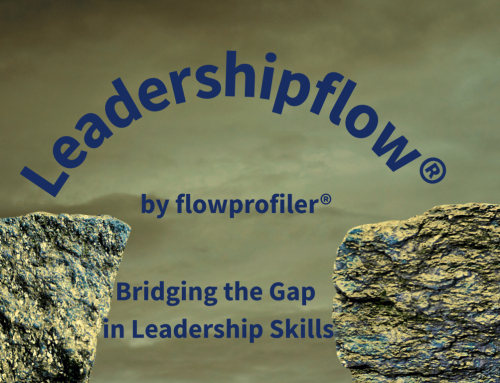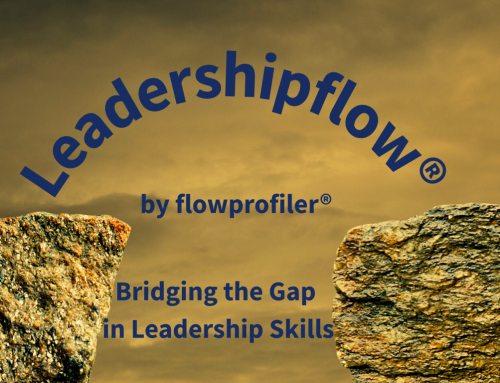Psychosocial Safety: Leadership Capability is Your Strongest Protective Factor and flowprofiler® is Fit For Purpose
Psychosocial safety refers to the degree to which a workplace protects employees from psychological and social harm, ensuring people can perform their roles without fear of threats to their mental health or wellbeing (Safe Work Australia, 2024; ISO 45003, 2021). A psychosocially safe environment is one where risks such as role ambiguity, workload pressure, interpersonal conflict, and poor support are actively identified, monitored, and reduced.
Psychosocial hazards are not abstract.
They appear in the everyday rhythms of work:
- Unclear roles.
- Relentless demands.
- Silence when support is needed most.
Left unaddressed, these conditions don’t just harm individuals, they create organisational drag, inflate costs, and reduce strategic execution. They are risk factors known to elevate stress, burnout, and diminished wellbeing (World Health Organization, 2022), which in turn impacts retention, customer experience, and the organisation’s ability to deliver on its goals.
And here is the critical insight:
❝Leaders are always doing one of two things:
amplifying these hazards or actively reducing them.❞
– flowprofiler®
Every emotional reaction, every expectation set, and every conversation under pressure shifts psychosocial risk up or down. Leadership behaviour remains one of the strongest determinants of whether people end their workday energised and focused or exhausted and disengaged.
❝When leadership capability rises, psychosocial risk falls.❞
– flowprofiler®
Why Leadership Capability Is the Deciding Factor
Research consistently shows that workplace demands become harmful when employees experience low control, inconsistent support, or unclear expectations (Karasek & Theorell, 1990). Likewise, team environments with poor communication or emotionally volatile leadership create conditions ripe for stress and burnout (Edmondson, 2019).
control, inconsistent support, or unclear expectations (Karasek & Theorell, 1990). Likewise, team environments with poor communication or emotionally volatile leadership create conditions ripe for stress and burnout (Edmondson, 2019).
In contrast, psychosocially safe environments are shaped by leaders who:
-
Emotional intelligence and self-awareness
-
Courageous, constructive conversations
-
Clear boundaries, rules and role clarity
-
Resilience and mental fitness under pressure
-
Healthy motivation and engagement
❝Stronger leaders create safer workplaces.
Safer workplaces create stronger results.
Stronger results drive organisational goals.❞
– flowprofiler®
These behaviours are not just cultural “nice to haves”. They are protective factors shown to reduce psychological strain and improve wellbeing (Safe Work Australia, 2024; McKinsey Health Institute, 2023).
Skilled, self-aware leadership creates clarity, connection, and psychological safety, powerful antidotes to stress, burnout, and disengagement.
❝When leaders rise, hazards fall.
And when hazards fall, people thrive.❞
– flowprofiler®
Leadershipflow® Pathways: From Hazard Reduction to High Performance
flowprofiler® doesn’t just diagnose behavioural capability; it provides a structured developmental pathway aligned to the Triple A Framework: Aptitude, Attitude, and Approach.
-
Aptitude strengthens behavioural capability
-
Attitude develops mindset, interpretation, and situational judgement
-
Approach builds consistent, healthy leadership habits
This alignment enhances both psychosocial safety and organisational performance. It creates leaders who are not only safer, but stronger.
The Outcome: Leaders Who Drive Organisation Outcomes
When organisations invest in flowprofiler®, they’re strengthening the behavioural capabilities that directly drive organisational outcomes:
• Clearer communication that accelerates decision-making, reduces rework, and eliminates operational friction
• Healthier team dynamics that unlock collaboration, accountability, and cross-functional performance
• Better emotional regulation that stabilises leadership behaviour and maintains performance under pressure
• Earlier issue resolution that reduces conflict costs and protects productivity
• Reduced stress and burnout which improves retention, lowers recruitment costs, and sustains workforce capacity
• Stronger trust and connection that elevate engagement, discretionary effort, and customer experience
Leadership capability is not just a wellbeing initiative, it is a strategic lever.
It is the frontline defence against psychosocial risk and a catalyst for achieving organisational goals.
❝When leaders rise, hazards fall.
And when hazards fall, people thrive.
When people thrive goals are realised.❞
– flowprofiler®
flowprofiler®: A Behavioural Solution to Psychosocial Risk
flowprofiler® is uniquely positioned to help organisations strengthen psychosocial safety because it measures and develops the behavioural capabilities most closely linked to reduced workplace risk.
The suite’s psychometrically validated assessments, eqflow®, resilienceflow®, motivationflow®, enable leaders to become emotionally intelligent, resilient, and socially aware. These qualities directly mitigate the psychosocial hazards outlined in ISO 45003 and national WHS guidance.
1. Emotional Intelligence & Self-Awareness (eqflow®)
Emotional intelligence is a leading predictor of effective interpersonal behaviour, reduced conflict, and improved team climate (Goleman, 2020). eqflow® builds leaders’ ability to recognise their emotional triggers, regulate their responses, and understand their impact, reducing volatility, ambiguity, and reactive behaviour that elevate psychosocial risk.
2. Courageous, Constructive Conversations
Effective communication and boundary-setting limit the silent issues that often escalate into conflict, uncertainty, or interpersonal strain (Edmondson, 2019). flowprofiler® strengthens regard for others, social awareness, and healthy assertiveness so leaders address problems early and fairly.
3. Clear Expectations & Role Clarity
Role clarity is one of the strongest protective factors for reducing workplace stress (Safe Work Australia, 2024). flowprofiler® helps leaders develop consistency, clarity, and confidence in how they communicate expectations and give direction.
4. Mental Fitness & Resilience Under Pressure (resilienceflow®)
Resilient leaders model composure, optimism, balanced thinking, and effective problem solving. Resilience has been shown to buffer the effects of organisational stress and promote healthier team functioning (Robertson et al., 2015). resilienceflow® strengthens these behaviours precisely where leaders need them most.
5. Motivation & Engagement (motivationflow®)
Understanding motivational drivers helps leaders create conditions where work feels meaningful and energising. Higher engagement is directly associated with lower burnout and psychological strain (Schaufeli, 2017).
If your organisation is serious about psychosocial safety, not just compliance, start with the leadership competencies that shape people’s everyday experience of work. Reach out to us at hello@flowprofiler.com to find out more.
References (APA 7th)
Edmondson, A. C. (2019). The fearless organization: Creating psychological safety in the workplace for learning, innovation, and growth. Wiley.
Goleman, D. (2020). Emotional intelligence: Why it can matter more than IQ (25th anniversary ed.). Bloomsbury.
ISO 45003. (2021). Occupational health and safety management — Psychological health and safety at work — Guidelines for managing psychosocial risks. International Organization for Standardization.
Karasek, R., & Theorell, T. (1990). Healthy work: Stress, productivity, and the reconstruction of working life. Basic Books.
McKinsey Health Institute. (2023). Addressing employee burnout: Are organisations caring for their people? McKinsey & Company.
Robertson, I. T., Cooper, C. L., Sarkar, M., & Curran, T. (2015). Resilience training in the workplace from 2003 to 2014: A systematic review. Journal of Occupational and Organizational Psychology, 88(3), 533–562.
Safe Work Australia. (2024). Model code of practice: Managing psychosocial hazards at work. Australian Government.
Schaufeli, W. (2017). Applying the job demands–resources model. Organizational Dynamics, 46(2), 120–132.
World Health Organization. (2022). Mental health and working life. WHO.





